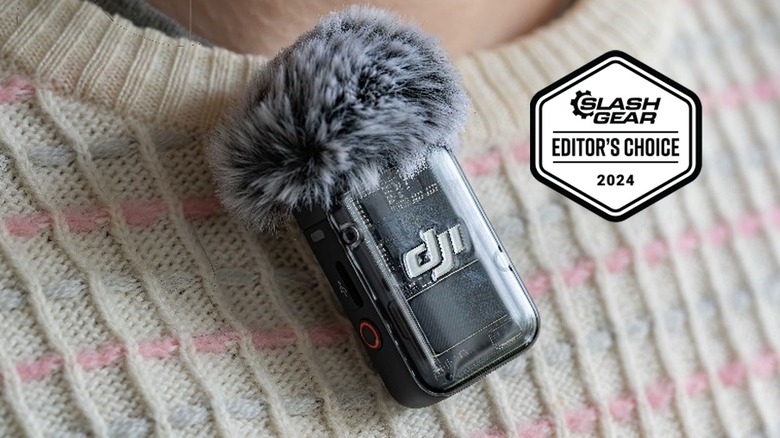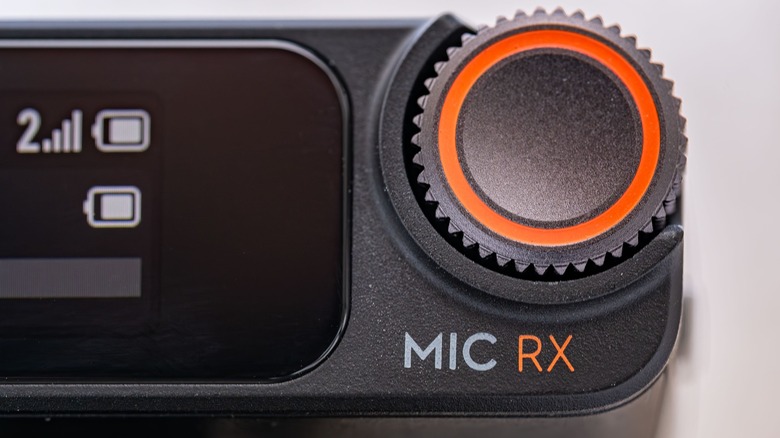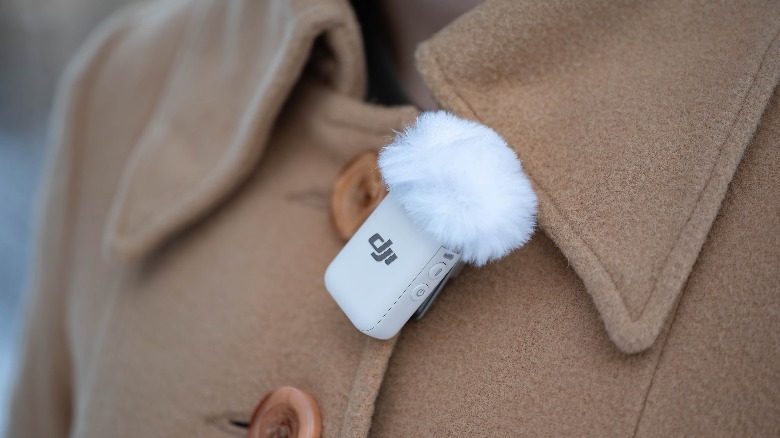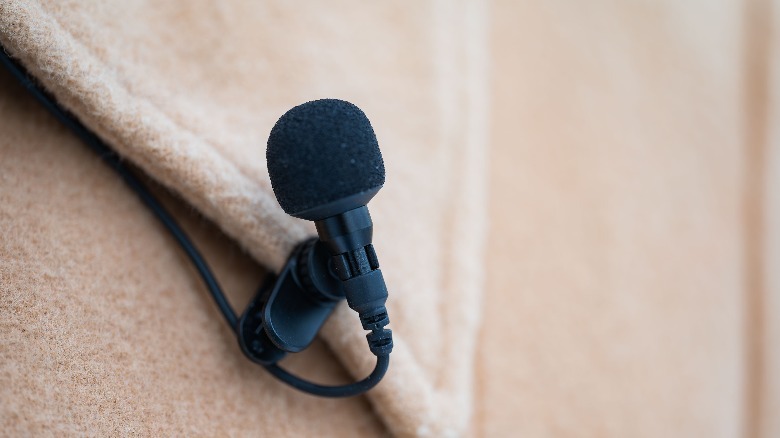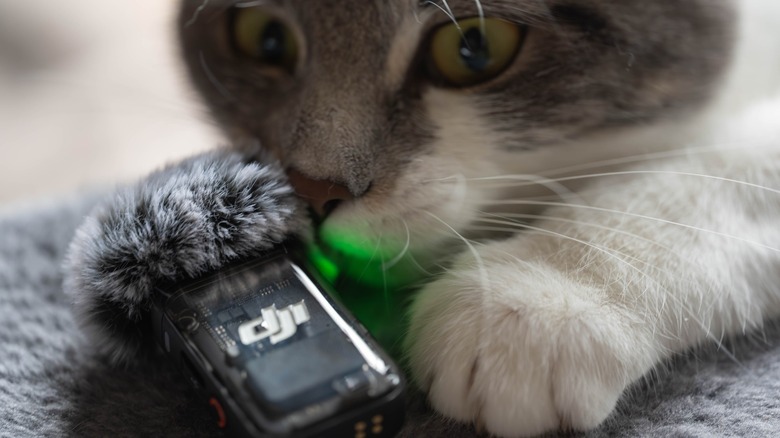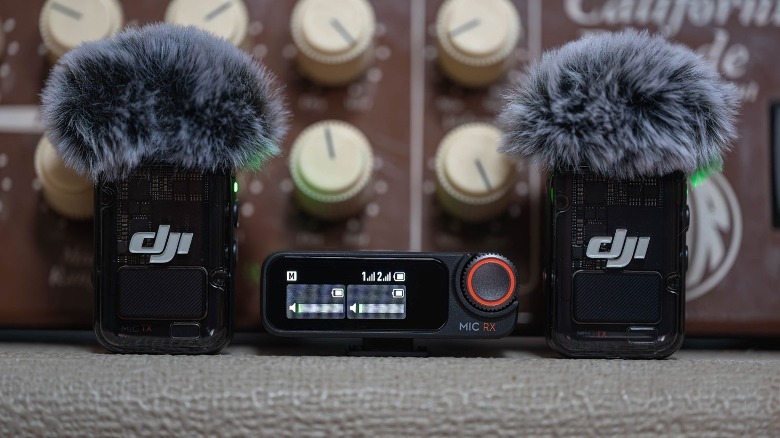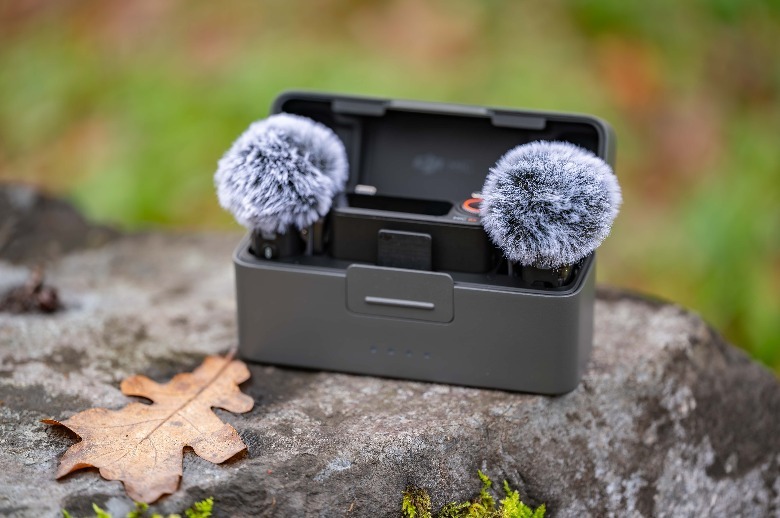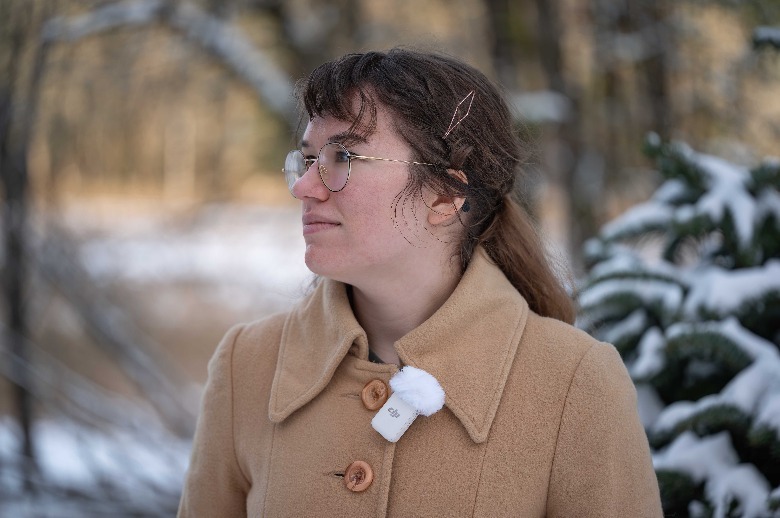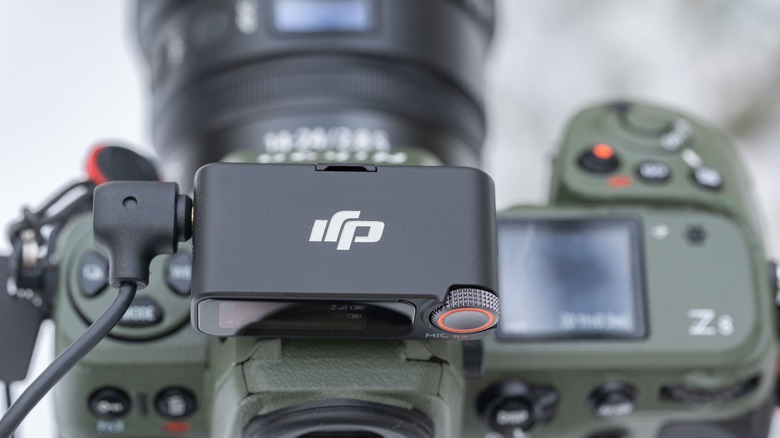DJI Mic 2 Review: No More Wires, No More Noise
- Improved audio quality
- 32 bit recording and backup track capability
- New control wheel for menu navigation on receiver
- Excellent battery life
- Robust charging case
- Highly effective included wind protection
- Extremely long battery life
- Transparent design of transmitters is cool, but shows smudges
- Expensive
We may receive a commission on purchases made from links.
The DJI Mic 2 is a wireless, omnidirectional microphone, an upgraded sequel to DJI's original wireless mic. Capable of recording on its own, connected wirelessly to a compatible device, or plugged directly into any camera or computer with a microphone socket, the DJI Mic 2 appears at least on paper to be a highly versatile tool for recording audio in a variety of scenarios. If its active noise-canceling capabilities are as good as advertised, it could prove a real boon to many creators.
We got a first look at the transmitter unit of the DJI Mic 2 last fall when it became available bundled with the DJI Osmo Pocket 3. It provided good results then, but the full kit, which has just now been made available, introduces important new features. Our experience using the transmitter with the Pocket 3, in addition to a month spent testing out the full DJI Mic 2 kit with receiver and other accessories has given us ample time to evaluate whether or not this is the microphone for you.
DJI provided us with a sample of the DJI Mic 2 for the purposes of this review.
Updated design adds welcome physical controls
The most immediately noticeable change to the DJI Mic 2 from its predecessor is the combination wheel slash button as an alternative to touchscreen controls for navigating menus and changing settings. This is a welcome addition, and we always like to see manufacturers moving away from relying so much on touchscreens. The screen itself is a beautiful 1.1-inch OLED touchscreen panel, which is responsive and bright.
The DJI Mic 2 transmitters now come in shadow black or pearl white colors, which helps it to better match different fashion choices. The white pearl mic can look remarkably similar to a carnation with the matching windscreen attached — and pairs well with certain outfits. The pearl white version also has a different front surface material which doesn't smudge so easily as the shadow black model, which does feature a cool transparent exterior that shows off the circuit board inside.
One of our favorite upgrades found in the DJI Mic 2 is the inclusion of new wind noise blockers. These fuzzy blobs are noticeably superior to other such wind blockers we've used. They're robust, visually appealing, and easy to attach and detach quickly, thanks to a socket that doubles as a 3.5mm input jack. That jack can be used for attaching a lav mic, such as the one we tested, which is sold separately by DJI.
Compared to the previous model, the transmitter units have the location of their power, record, and link buttons swapped around, as well as a new wide grill covering the microphone. They may be attached either by its clip or by the included magnet.
32-bit float recording for worry free recording
Key to the appeal of the DJI Mic 2, particularly for more serious and professional audio recording, is the inclusion of 32-bit float capability. This is paired with an optional backup track at -6 db to effectively eliminate the potential for clipping and allow for greater flexibility in post-processing. Think of it like capturing a still photo in RAW format compared to JPEG — but for audio.
We found sound quality with the DJI Mic 2 to be very good overall, and if you're going to be recording videos in which you're traveling around talking to the camera, it's a huge improvement over your internal microphone, and in many scenarios, we find a system like this preferable to a shotgun mic, which is a highly directional microphone frequently used as an on-camera mic.
In our side-by-side comparison test, we found that the DJI Mic 2 to deliver a slight but noticeable improvement in overall audio quality compared to the original DJI Mic.
Effective active noise canceling
One of the benefits of using a mic attached to your clothing is that it's easier to isolate your voice in loud environments with a lot of distracting noise. However, some of that still filters in, even with highly directional microphones. That's where the DJI Mic 2's intelligent noise-canceling functionality kicks in, and we found it to be highly effective.
Testing it out on a windy day near a busy street, we were able to practically eliminate all the ambient noise other than our voices. The new design of the included windscreen has a fluffier, denser "deadcat" and a tough internal structure that offers greater physical protection from errant breezes, and the microphone is particularly adept at electronically canceling ambient noise.
The intelligent noise canceling struggled a bit more when we subjected it to more challenging conditions, but it still did a good job of making our voices understandable amidst the din. First, we banged pots and pans in the background as we talked, and then played loud bagpipe music on a stereo system. In these extreme scenarios, bits of unwanted noise did filter in — occasionally — but this shouldn't be an issue unless you're trying to make yourself heard in a commercial kitchen or the crowd at a rock concert.
All day battery life and impressive wireless range
The transmitters and receiver each have a 6-hour battery life, which is more than enough for almost any conceivable shoot. On top of this, the charging case included with the DJI Mic 2 extends this to 18 hours. Even filming daily with the DJI Mic 2 for a month, we weren't able to exhaust its battery capacity, though you'll need to charge it more frequently if you typically film for longer sessions.
On the topic of the charging case, it's slightly larger than the charging case for the original DJI Mic, with sharper angles, and is colored silver. It's not quite so easy to fit in your pocket, but it does close more securely thanks to a new latch design.
The 820-foot range of the DJI Mic 2 is equally as impressive, and we fully tested the extent of this range, a task that required walking across a large bog to achieve a sufficiently long line of sight. Going behind sufficiently dense objects will interrupt the signal, but it's instantly reacquired upon reestablishing its line of sight. It's hard to imagine a scenario where the range and strength of the DJI Mic 2 would be insufficient.
If need be, the DJI Mic 2 can be plugged into your device via included USB-C and Lightning port adapters. These attach to the Mic 2 receiver unit via an onboard hotshoe, which then may be plugged directly into your phone or computer.
A versatile audio recording system
The DJI Mic 2 isn't just a microphone that you plug into a camera – there are a lot of other ways to put the system to use. For one, you don't necessarily need another device to record into. Each transmitter unit of the DJI Mic 2 is equipped with 8GB of internal storage, enough to store up to 18 hours of recordings.
Another cool trick is the ability of the DJI Mic 2 to connect to your smartphone or certain DJI cameras via Bluetooth. Being able to connect a wireless microphone directly to your smartphone has numerous and obvious advantages, but it's the ability to connect directly to a camera that we find compelling. Both the DJI Osmo Action 4 and the DJI Osmo Pocket 3 are compatible with the DJI Mic 2, and pairing the microphone to these devices is remarkably quick, reliable, and seamless. It's part of what makes the Osmo Action 3 arguably the best camera for vlogging, and the combination of microphone and camera is incredibly compelling for creators.
In a spaced, stereo configuration, the DJI Mic 2 is also really good at recording ambient sounds. However, when using the microphone in this way, some odd audio effects did appear, particularly when we tried to record instruments and vocals. This wasn't an issue we encountered when using the microphones to mic sources individually.
A bit pricey, but justifiably so
At $350, the DJI Mic 2 is $100 more than its predecessor and is similarly steeper than the Rode Wireless Go II. However, it also offers some significant upgrades which help to justify this high asking price. Active noise canceling, 32-bit float recording, and easy wireless connectivity with the DJI Osmo Pocket 3 and Action 4 are the standout reasons to choose this mic over its predecessor. However, if you don't intend to buy either of those cameras or if you aren't likely to need some of those key features, then you might not find it worth the cost of upgrading from the original DJI Mic.
If you're looking for your first wireless mic system, or if you frequently record in challenging conditions, then the system is certainly worth the cost. However, the price remains the one major downside to the DJI Mic 2, even though it does offer value to match.
Fortunately, DJI does offer a cheaper alternative of buying just the transmitter and receiver unit as part of a $219 bundle. Transmitters are available for $99 each if you just want one to use with your phone, Action 4, or Pocket 3, and if you decide later that you want the charging case, that'll set you back $69. The DJI Lavalier Mic costs $39.
Conclusion
The DJI Mic 2 may be quite expensive, but it's also the best wireless microphone for most content creators, particularly if you're filming in challenging conditions where its intelligent noise cancellation, 32-bit float recording, and backup track capability could be the difference that makes the audio you capture usable. The original DJI Mic earned a permanent place in our camera bag ever since it launched, and the DJI Mic 2 is a worthy successor.
For YouTube creators who record in the outdoors or other unpredictable environments, the DJI Mic 2 is extremely compelling. Its portability, simplicity, and reliability combine to speed up workflow in the field. Throughout testing this microphone, we've come to rely on it to always deliver great audio even in the most hostile circumstances. In one instance we used it for an all-day solo video shoot where we recorded in sub-freezing temperatures and near-blizzard conditions, yet not once did the DJI Mic 2 falter from the cold or the snow, nor did we even come close to running out of battery life. Despite at times howling winds, all audio came through loud and clear without distracting wind noise.
With all of this in mind, it's easy to recommend the DJI Mic 2. You can purchase the DJI Mic 2 from DJI now for $99 (just the transmitter), $219 (1 TX + 1 RX), or #349 (2 TX + 1 RX + charging case).
